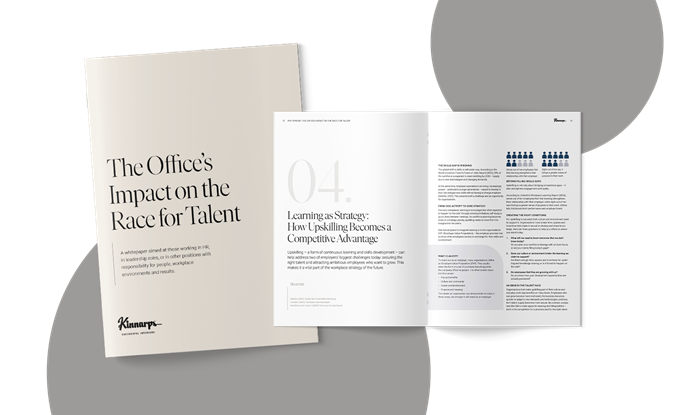Wellbeing: The New Currency in the Talent Race
Talent supply: a global challenge
In a global Manpower survey (2025), 74% of companies reported difficulties with talent supply – a figure that has more than doubled since 2014. The dramatic increase is driven by rapid changes in the labour market, triggered in part by technological advances.
These shifts have created a gap between the skills available and the skills actually needed, intensifying the competition for talent.
Workplace wellbeing attracts talent
In the Future of Jobs Report (World Economic Forum, 2025), 64% of employers stated that investing in employee health and wellbeing is a key strategy for attracting talent.
Employees themselves say the same: a Gallup survey (2025) found that improved health and wellbeing is the single most important factor in attracting them to a new employer.

The economic impact of wellbeing
Promoting health and wellbeing not only supports long-term talent supply – it also has clear financial benefits. For example:
- One sick day costs employers an average of 360–540 EUR. Data shows that organisations investing in wellbeing can have up to 78% lower absence rates than their peers (Gallup, 2025). In a company with 100 employees, this can amount to savings of 350 000 EUR per year.
- Wellbeing drives engagement. Engaged employees deliver better results. Gallup (2025) found that companies with engaged teams report, on average, 23% higher profitability, 18% higher productivity and 21% lower staff turnover compared to others.
- The McKinsey Health Institute and World Economic Forum (2025) estimate that investments in employee wellbeing could generate an additional USD 11.7 trillion globally. Organisations that prioritise wellbeing achieve higher productivity, lower absence and greater employee commitment.
Organisations investing in wellbeing can have up to 78% lower absence rates than their peers. In a company with 100 employees, this can amount to savings of 350 000 EUR per year.
A Shared Responsibility for HR and Leadership
Health and wellbeing have overtaken salary as the single most important factor for attracting and retaining talent. It is not just about creating a pleasant environment – it drives performance, engagement and competitiveness.
The most attractive employers have made wellbeing a central part of their employer brand. But to succeed, the responsibility cannot rest with HR alone – it must be jointly driven by leadership and management.

Curious about how the office can strengthen your employer brand?
In the white paper The Office's Impact on the Race for Talent you’ll find more insights and practical actions to promote wellbeing, boost engagement and drive results.
Sources
Manpower. (2025). Global Talent Shortage Survey
Gallup. (2025). Employee Engagement & Experience
Gallup. (2023). The Benefits of Employee Engagement
Gallup. (2025). Top four reasons for taking a new job
McKinsey & World Economic Forum. (2025). How employers can create a thriving workplace


